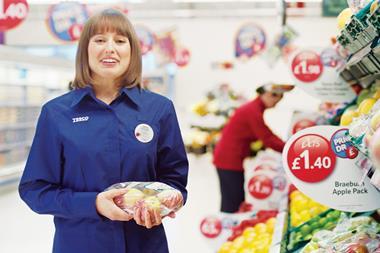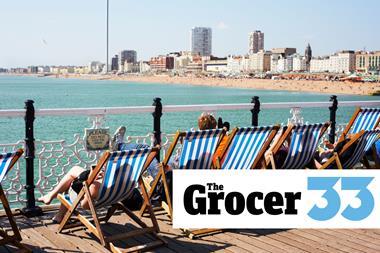A resurgent Tesco, slowing food price inflation, lower growth: how worried should Sainsbury's chief executive Justin King be? Alex Black reports
The City has grown used to strong like-for-like figures from Sainsbury's since Justin King took over, and with a better-than-expected 18.5% increase in underlying profits, he didn't disappoint.
But a resurgent Tesco, slowing food price inflation, like-for-like sales growth of just 5.7% and 4.7% in the 12 weeks to 31 October the lowest of the big four, according to Nielsen has prompted analysts to speculate once again on Sainsbury's future, with rumours of another Qatari-based bid helping to fuel the fire in the media.
At the interims this week, the Sainsbury's CEO was once again upbeat, with an update on the group's expansion plans accompanying insights into a resurgence in sales of ready meals, flowers and non-food goods in the run-up to Christmas. But by his chirpy standards, it was an uncharacteristically gloomy forecast for 2010 that King painted, as he pointed out the challenge of facing up to VAT increases, the uncertainty of an election, rising taxes, growing unemployment and the possibility of a 'W'-shaped economic recovery.
On Sainsbury's performance, however, King was defiant. "We don't need anyone else to fail for us to succeed... we're still growing market share," he said.
In the short term King has also been encouraged by sales of higher-margin non-food lines, growing at about 2.5 times the rate of food, and the number of lines on the general merchandise website, launched in July, will increase from 4,500 to 8,000 by this Christmas.
King's longer-term aim is to build large non-food areas in new stores and expand the size of non-food areas in current stores, taking the number of 15,000 sq ft-plus stores with non-food lines from 38 to more than 100 by March 2011.
Analysts have expressed concern that these plans leave Sainsbury's more debt-laden than before, with the retailer's net debt at £1.8bn as of 3 October, an increase of £94m from the 2009 year-end position. However, CFO Darren Shapland pointed out that the net interest cost was down 25.4% to £44m year-on-year because about £850m of the company's debt repayment was inflation linked. These costs are expected to remain similar in the second half of the year.
But it's the short-term slowdown that's given most cause for concern. Shore Capital analyst Darren Shirley says Sainsbury's profit growth is mainly attributable to operational gearing, and other analysts have accused it of buying sales through promotions rather than "encouraging consumers to shop deeper like Morrisons". King rubbishes such suggestions, arguing tighter cost control and a stronger promotional mix were working.
Cazenove analyst Mike Tattersall adds that Sainsbury's is in a similar position to Tesco 10 years ago. "It has a big property opportunity and stores with expansion potential. If it gets this right the returns should be good."
Sign in to comment on this article
Not logged in before? Register for FREE guest access today.
You will be able to:
- Read more stories
- Receive daily newsletters
- Comment on stories
Advert



















No comments yet